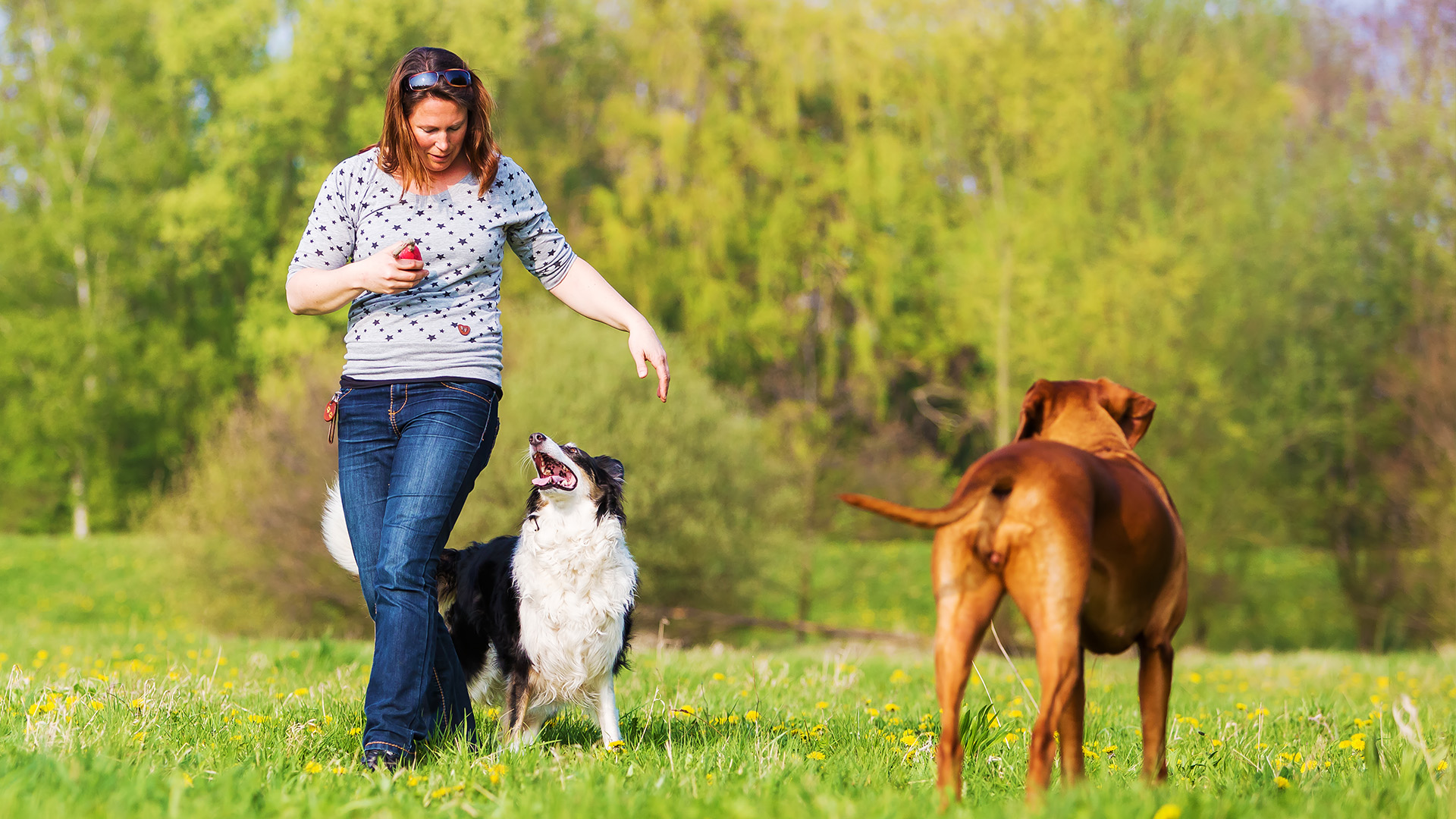Try these three expert-approved techniques to help your dog learn a new skill
You can use a combination of all three to set your pup up for success

Contrary to the popular saying, you can teach an old dog new tricks – and, in fact, dogs of any age can learn new skills!
But how can you teach new skills to help your dog learn best? We’re willing to bet you already use some of the best dog treats when teaching and training your dog, and positive reinforcement is always best!
These three simple techniques, as laid out by expert trainer Juliana DeWillems, the owner and head trainer at JW Dog Training & Behavior, could really help you and your pup succeed, so let’s take a look at what we can do to use positive reinforcement to help dogs learn new skills.
A post shared by JW Dog Training & Behavior Consulting (@jwdogtraining)
A photo posted by on
1. Luring
“This is where you have a treat in your hand and you use it to guide your dog into specific positions,” explains DeWillems. “Luring can be pretty easy for most people and dogs to do, which makes it a popular option.”
With this technique, just keep in mind that the treat can become part of the cue for the behavior, even after you’ve taught it – here’s some more advice about training dogs with treats and treat delivery methods.
2. Capturing
Here, your dog does something naturally, without any prompting from you – you then reward it.
“Capturing is helpful because it means the behavior is already in your dog’s repertoire,” says DeWillems, “So you can pretty easily reward it and put it on cue under the right conditions.”
Get the best advice, tips and top tech for your beloved Pets
3. Shaping
Shaping is where your dog makes progress toward the end goal in small amounts; you’re building the behavior in small blocks, with each repetition getting you closer to the desired behavior.
Remember, patience is vital when you’re training a dog. While some dogs do pick things up faster than others, our dogs aren’t going to learn everything overnight. However, it’s well worth putting in the effort – you’ll thank yourself further down the line! And, the techniques DeWillems describes here could really help you out.
“Very often, you’ll find yourself using a mix of all of these techniques to get behavior, so it can be really helpful to understand what and how your dog is learning through positive reinforcement,” she sums up. “The next step from here would be adding a cue.”
While training your pup probably won’t prove as difficult as you might think, you might find that these 27 practical tips for training your dog on your own will come in handy, too.

Adam is a freelance journalist specialising in pets, music and culture, and mental health and wellbeing. He investigates and writes the large majority of news on PetsRadar, and collaborates with veterinary experts to produce informative pet care content.
Adam has a journalism degree from Southampton Solent University and a masters degree in Magazine Journalism from Cardiff University. He was previously senior editor at dog advice website DogTime.com, and has also written for The Independent, GoodToKnow and Healthline.
He owns two rescue cats, Bunny and Dougie, and has also previously had a rabbit, fish and Roborovski dwarf hamsters.
